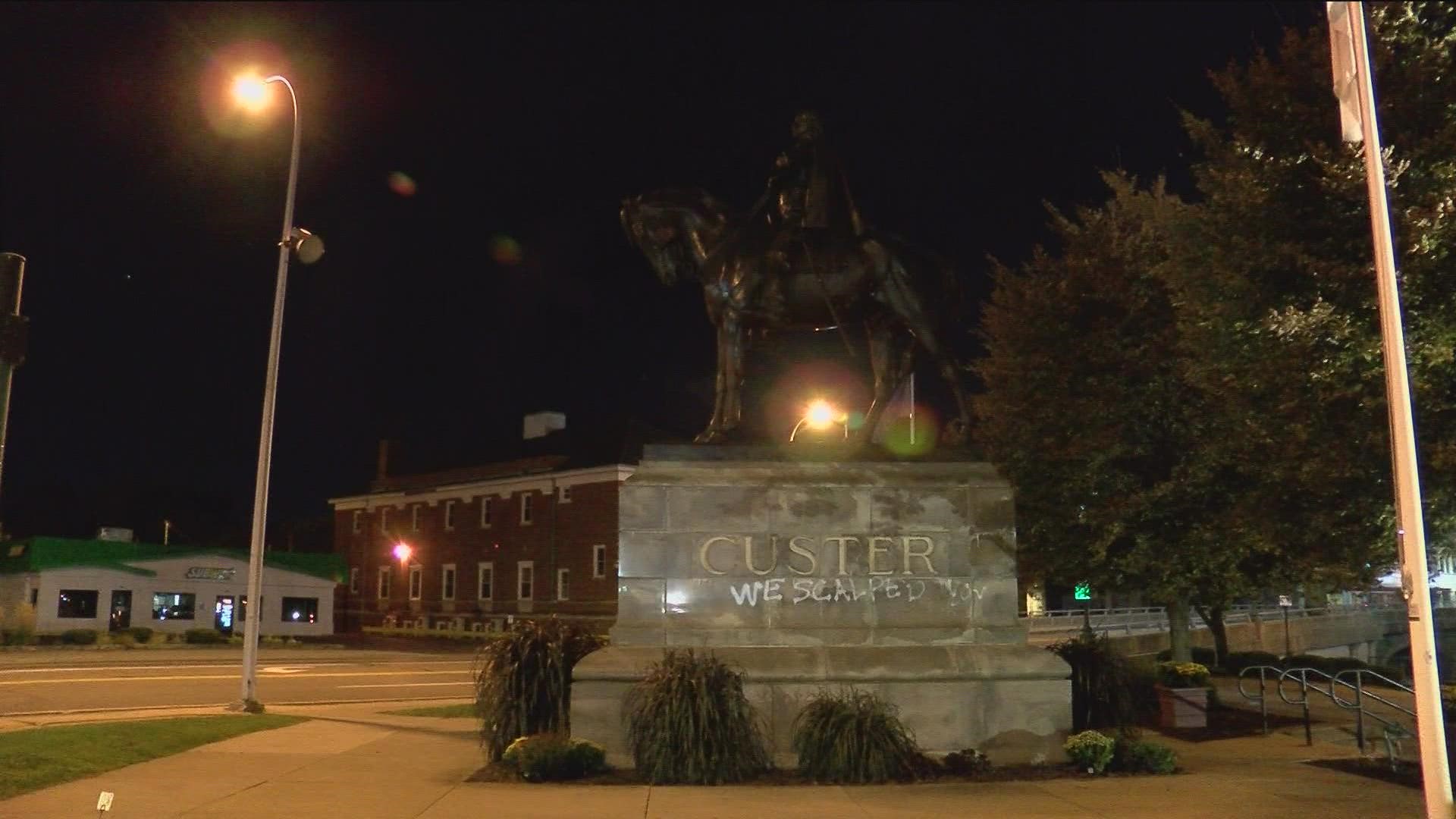MONROE, Mich. — Two people were arrested early Tuesday morning in Monroe after police say they vandalized the George Armstrong Custer Equestrian Monument.
A third suspect got away, according to a Monroe Public Safety Department Facebook post. The photo attached to the post appears to show the words "we scalped" under the large "Custer" inscription on the monument.
Officers arrived in the area of West Elm Avenue and North Monroe Street about 2:30 a.m. Three suspects were observed by officers wearing dark colored clothing and one was seen holding what appeared to be a can of spray paint.
According to police, all three subjects fled when officers activated their vehicle lights. A 29-year-old female and 32-year-old female were arrested and charged with malicious destruction of property and resisting and obstructing.
Both suspects are from the Detroit area. Their names have not been released.
The identity of the third suspect is unknown. Anyone with information regarding the incident is asked to call 734-243-7524.
The damage to the monument was repaired.
Monument controversy
Custer grew up in Monroe before attending the United States Military Academy. He was a key figure in the Civil War and considered a hero for helping the Union secure a major victory at the Battle of Gettysburg.
After the war, Custer was ordered to serve in the American West where he often clashed with Native Americans. He and his troops led several efforts to wipe out villages across the region.
More recently, Custer has been accused by many of genocide. Historic accounts show he often violated peace treaties and led violent attacks on Natives.
In 1868, Custer led a campaign against Cheyenne Indians near present-day Cheyenne, Oklahoma. According to reports, Natives in the camp were peaceful and even displayed a white flag outside their dwelling to signal they did not wish to fight.
Custer made no effort to determine which group of Cheyenne were present. His men killed over 100 Cheyenne, including many women and children.
Custer was killed during the Battle of Little Bighorn in 1876. Newspaper reports at the time indicate he was not scalped by his enemies, but unconfirmed theories have gained popularity over time.
Scalping was a common practice for both American and Native American soldiers.
A Change.org petition started in 2020 to remove the statue has nearly 15,000 signatures. The monument - which is over 100 years old - sits on land that once belonged to Native Americans.
The city offered to hire a consultant last year to mediate after supporters and detractors clashed over the monument's future. Both sides eventually rejected the offer.
Monday marked Columbus Day and Indigenous Peoples Day across the U.S.
RELATED VIDEO

